A Guide to Start Your Hyperlocal Delivery Business Model
30 Jul 20 

Have you ever wondered how markets used to exist before globalization?
You might have read in your textbooks about the inefficiency and nepotistic rule by commercial elements in the last century. But was it always so?
Here we explore through the hyperlocal delivery business model, the new possibilities for the profit and prosperity of businesses everywhere in the world. Because competition needs to be among the equals, else it’s not fair.
What is a hyperlocal delivery business model?
Let’s break down this big word.
Hyperlocal means to go local in your business. It calls for localization in its true spirit and form.
The delivery model indicates the system or mechanism to satisfy the on-demand needs of the consumer of this “hyper” locality.
A hyperlocal delivery model can be defined as an online business model in which the on-demand needs of customers are met through local offline shops via a digital platform. The demand for goods and services of customers like grocery, medicine, laundry service, etc. are met instantly.

Well, if it all looks so confusing, we here have an anecdote to clear things for you. Because examples define models better than textbook definitions :
Suppose you are one of the hyperlocal startups in your area. You connect with your customers through a mobile application. E-commerce applications help businesses grow in general. Unlike an e-commerce application where customers shop for things with an expected one-week delivery margin, the hyperlocal delivery model is about speed and quality. You get an update that a customer at the east end of your city wants fresh whipped cream to bake a birthday cake. Being connected with the local diaries and food chains, you order a fresh cream pick up and alert your delivery man. And within 30 minutes the customer gets the fresh cream and rates you five stars.
This is just a simple use case of what hyperlocal delivery business models could be. The area of operation, the needs of the population there, the connectivity, etc defines the efficiency of a hyperlocal business model.
Why is it important to go for hyperlocal delivery?
The hyperlocal delivery model of doing business can play a multi-dimensional role in promoting the growth of an individual as well as the community. Let us examine them one by one:
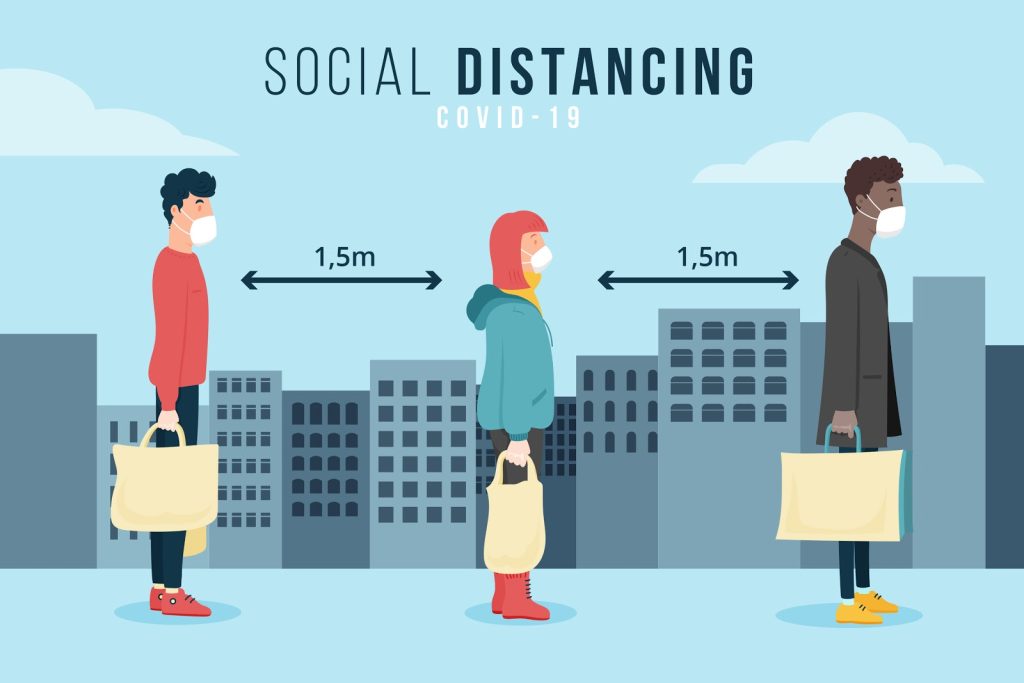
Role of a hyperlocal delivery model in Covid-19 combat
The hyper-local delivery model has attained a special significance in this Covid-19 scenario. Communities and local administration is finding ways to balance social distancing and economic activities simultaneously. The hyperlocal delivery model is a very effective way to prevent the spread. Because social distancing often becomes a second priority when people see each other.
Sustaining local economies
The world economy forecast is very upsetting. But it is a global view of things. What intelligent businesses need to realize now is that the whole is made from parts. A big house stands on bricks, and if the blocks are alright, then there is always a possibility to rebuild.
Hyperlocal models of economic activities can help in creating small self-sufficient economies. Government agencies can take up essential deliveries like vegetables, fruits, dairy products, etc. At the same time, the extra-local goods can be supplied by the retail shops in the locality.
Supports Local Businesses
Globalization, in all its glory, was fundamentally a very unfair market condition. The inability of businesses in the rural areas of the world was disregarded, and the quality of sharing those big businesses will bring thorough expansion was highlighted. But the result was the rich getting richer and the poor getting poorer.
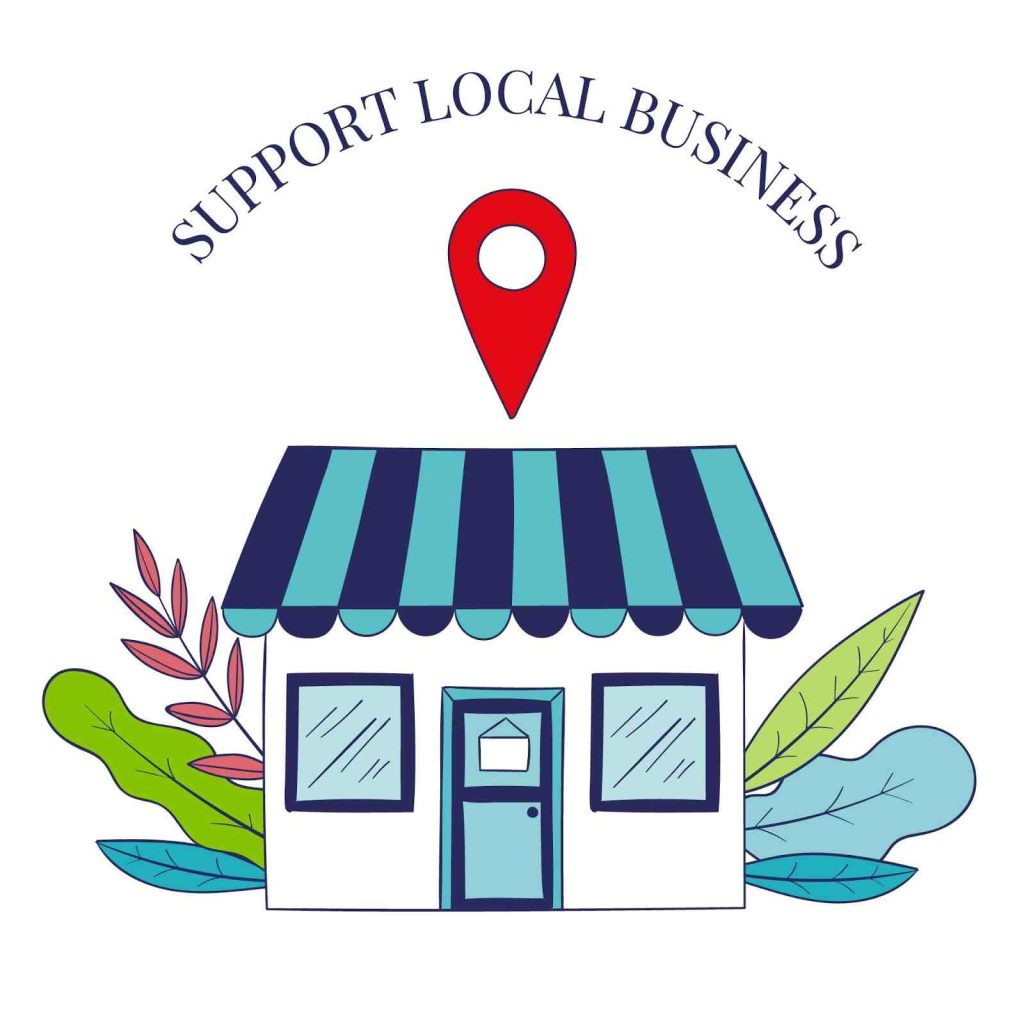
Localization of businesses opens a new path, a new world of economics. A world where every business can be successful and every customer better served.
Do Away With Intermediaries
One of the main reasons that impediments startups and small businesses are the intermediaries. The farmer is the best example. He works hard day in and day out and harvests crops. But shops hardly pay him the just amount and inflate their margins. The result is the end-user pays more than necessary, and the producer gets less than what he deserves.
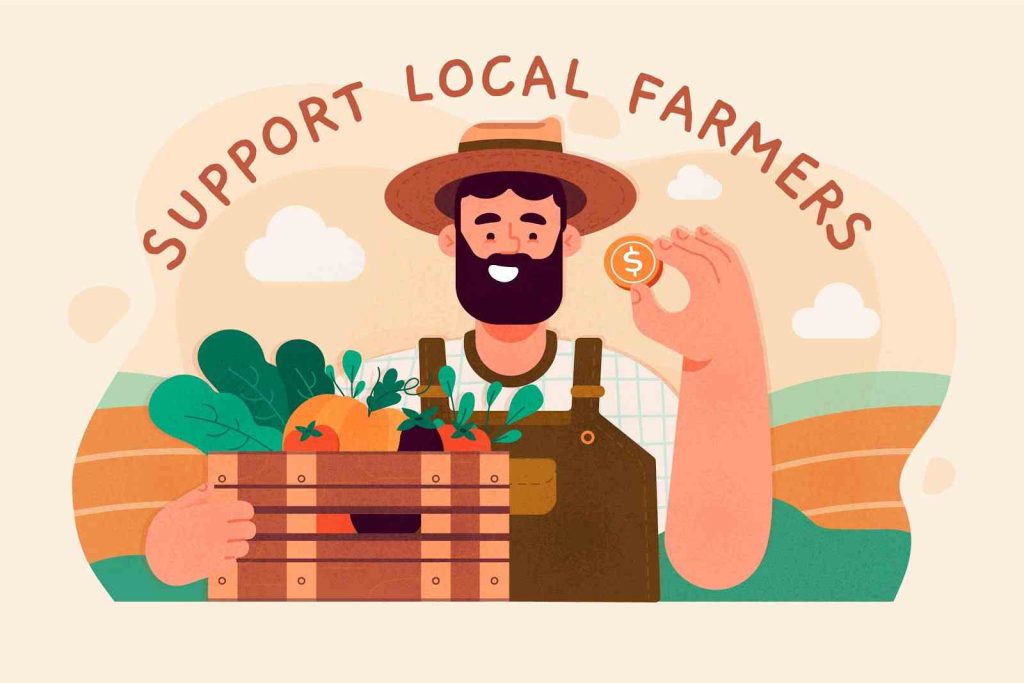
Hyperlocal delivery businesses can directly link producers and consumers. Such local farm clusters can start the delivery service. It can, in effect, bring down artificial inflation in the economy to a great extent.
How does a hyper-local marketplace work?
The hyper-local market works with the infrastructure and elements that already form the current local markets. But to understand better, we can divide hyperlocal e-commerce into two broad categories:
- Hyperlocal services – It includes the service sector, which provides: laundry service, home services, logistics, medical and associated services, etc.
- Hyperlocal Delivery – The delivery is concerned with the delivery of food products, groceries, electronic gadgets, home necessities, etc.
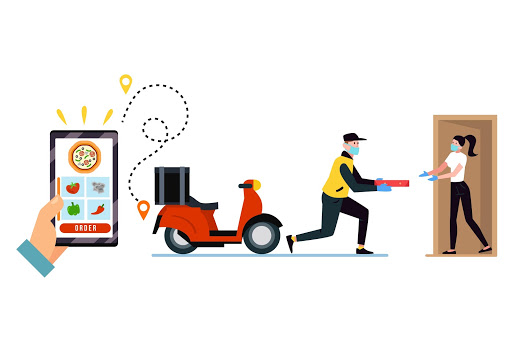
So between these services and delivery, they operate in the marketplace. A hyper-local market will work on a strong interlink between technology and workforce. The supply chain is a crucial aspect of hyperlocal business models. It operates with the delivery agency playing the bridge between the immediate consumer need and the available supplies.
The local store will have to employ mobile app ideas to invent new possibilities that are hidden in their economy to start the hyperlocal phenomenon. Hyperlocal apps become the centre of this marketplace and will be the dominant line of communication between businesses and customers. Now let’s see the technologies that make the hyper-local marketplace work effectively.
What technologies make up a hyperlocal marketplace?
Discussions on hyperlocal business models often see an extensive reference to infrastructure building. It is seen as one of the challenges in building a hyperlocal marketplace. The technologies that make a hyperlocal marketplace function can be categorized as:
A Navigation System
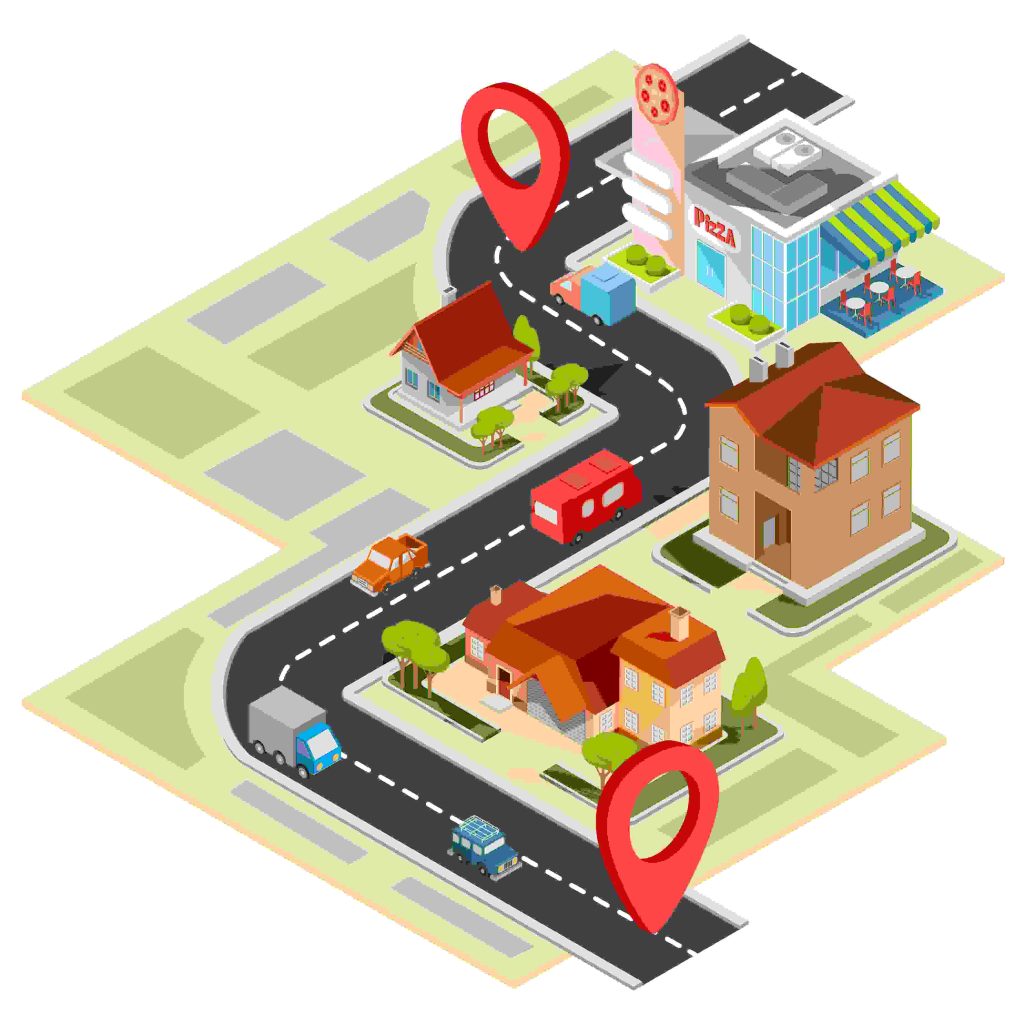
Hyperlocal businesses today can explore the power of mobile phones. The GPS or other navigation systems that are in-built in them inform customers about the location of stores, the tie-ups it has and helps them choose the best. Finding retailers in the nearby locality, arranging returns etc. becomes very easy. Delivery is smooth here with customers flagging their exact location through Google maps or other navigation apps.
Online Payments
The payments in a hyperlocal system need to be digitized. Because speed and simplicity are the quality of this industry, and digital payment solutions can deliver them with ease.
E-commerce Platforms
A mobile app or an e-commerce website forms the e-commerce platform. It will be the critical point of communication with clients, suppliers and employees.
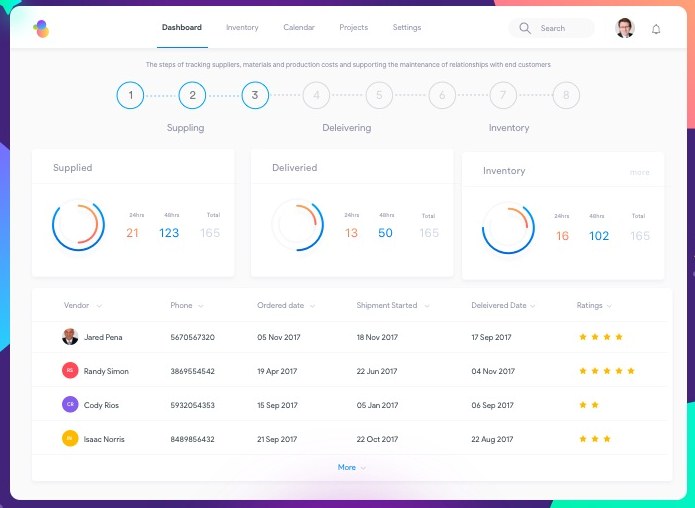
Supplier Relationship Management (SRM)
It is a platform for the suppliers to upload their products online and connect with the retail stores. It interlinks them with the hyperlocal agents in the locality.
Customer Relationship Management (CRM)
CRM is the main component of the hyperlocal system, which creates understanding between the customers, the businesses and the delivery agency. It will be a medium to address grievances, communicate.
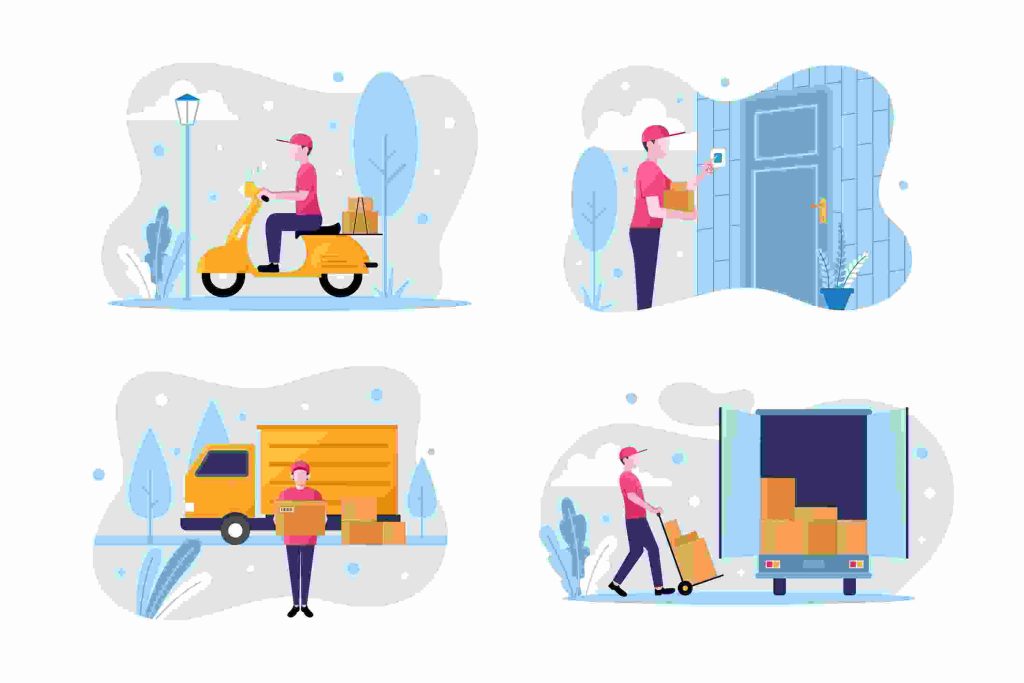
Logistics and Shipping
Enabling the last-mile delivery of goods and services, this is the active element of a hyperlocal marketplace.
What are the supply chain models of a hyperlocal business?
A hyperlocal business model has three leading players:
- Suppliers (Local Business/Retailers)
- Aggregators (Hyperlocal Players)
- Consumers
The three players from the crux of a hyperlocal delivery business model. The way they interact in real life takes can lead to three models as described below:
Inventory-led model
The inventory-led model is one where you source your products directly from the brands and sellers and create an inventory of them. Here you are playing a direct role in the hyperlocal market, and you have to keep tracking the demand push from customers and keep a team to manage inventories accordingly.
Pros: Higher speed of delivery, better quality control, provide the best customer experience and service
Cons: Initial cost is high, difficult to scale, cash flow is restricted
Aggregator model
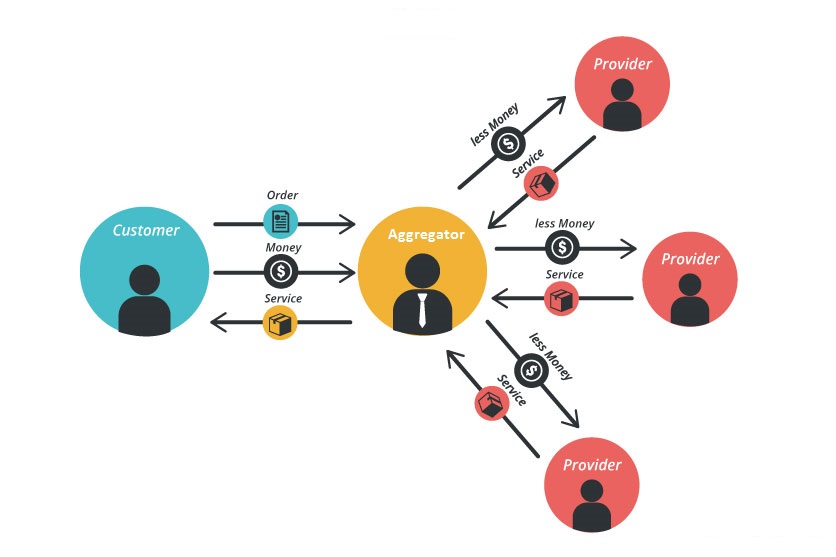
It is essentially a zero -inventory model, where you play the role of a facilitator. Just like the Uber business model. Uber makes use of the unorganized taxi sector and the passengers by being a connector between the two. So in the hyperlocal context, it means you become a connecting link between the distant suppliers and customers to ensure last-mile connectivity and delivery.
Pros: very scalable ( as Uber expanded over the years), more extensive portfolio of products, investor-friendly model
Cons: Uncertain quality checks, higher shipping costs, have to build customer trust from scratch.
Hybrid model
It is a mix of the inventory and aggregate model. It can be shaped in the way you like to make the pros of both come handy to them. The control overstocks and the flexibility of managing supplies etc. forms a vital part of this model.
What is hyperlocal targeting?
Hyperlocal targeting is a very efficient way to market your hyperlocal business and gather attention. People need to know that you exist. Then only can they avail your service. A hyperlocal targeting involves, first identifying the type of customers in your locality. Make a classification based on their income, spending patterns, the time they spend on physical stores, their accessibility to technology, etc.
It then involves devising strategies to reach your clients through various marketing techniques: bulk emails, or SMSs, or other means of reaching out to them. Creating a grocery app or mobile e-commerce application can serve the dual purpose of marketing and operations. However, any such decision needs careful consideration of the local customer trends.
How does a hyperlocal delivery model work?
We have discussed the overall components in a hyperlocal delivery model. We saw how a hyperlocal marketplace looks like and how one can go on building a business model using them.
Now, let us get a mock idea of the way things will function in a hyperlocal delivery business model :
Firstly, choose the product you want to deliver or sell

Begin with a product or two as your investment supports. There is always a scope to expand, start with minimal selections to test the local market waters because a large investment can backfire. Without learning some practical experiments to assess the local user behaviour. So round up those 3-4 sets of products and be ready to serve the customer earnestly. Remember, it is better to start as an aggregator model initially. It will help you connect deeply with the local population and gather essential information about their expectations and needs.
Wave the flag at your users, let them know you are here
The second and first step almost goes together. You make your presence known with the advertising methods that appeal most to the localities. Studying the response of customers towards previous businesses can be a very effective way to gather the right hyperlocal targeting for your area of operation.
Build local partnerships with delivery agents and merchants
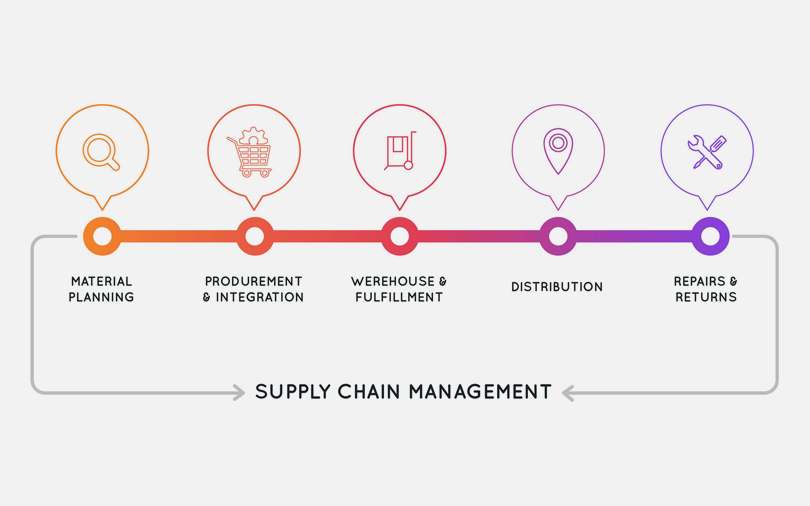
Slowly, as you grow, you take note of the new services and products customers expect from you. And then collaborate with local businesses and home delivery agencies to strike a deal. The mutually benefiting aspects and the long -term possibilities of the delivery business can persuade them. Try to first connect on a contractual basis as your testing water stage is entering the final step, and you don’t want to gamble away your savings now.
Define Your Business Relationships

Slowly, as you find the profits coming your way, try to stabilize your business. Properly defining your relationship with the elements of your business viz. are retail merchants, delivery drivers or agencies, customers. Now, is the time to create an idea about yourself in their hearts. You are tasting success, and now you want to take it further through sustainable business relationships.
Decide on an income model
The experience you have gathered so far will help you pin the type of income model that suits this business. You can choose from the different supply chain models we discussed above like the inventory-led model, or the aggregator model or the hybrid model. You will be in a better position to make the right choice regarding it by now.
Launch a mobile app to manage things easily
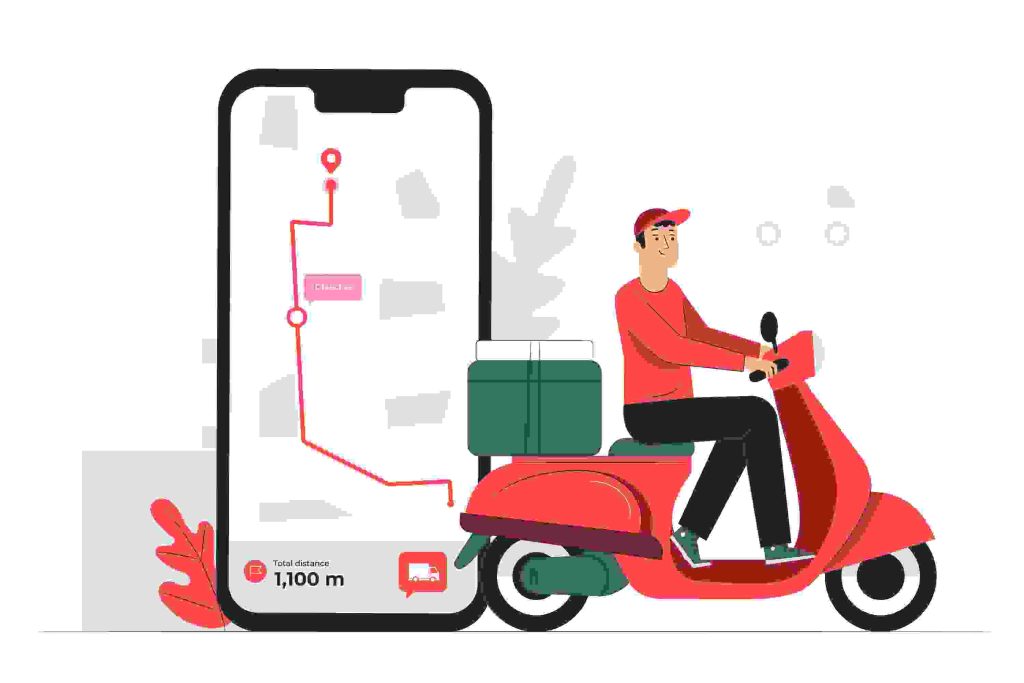
The final step is to relax. And, technology is here to make your life easier. You can now breathe for all the hard work you did to bring this business to fruition. Mobile apps have made grocery delivery in the US a success.
Now, manage the companies, deliveries, supply-chain needs, etc. with the technologies we discussed in the previous sections. CRM, SRM, logistics, etc. come to take a central place in this cycle of activities.
Benefits of creating a hyperlocal business model marketplace
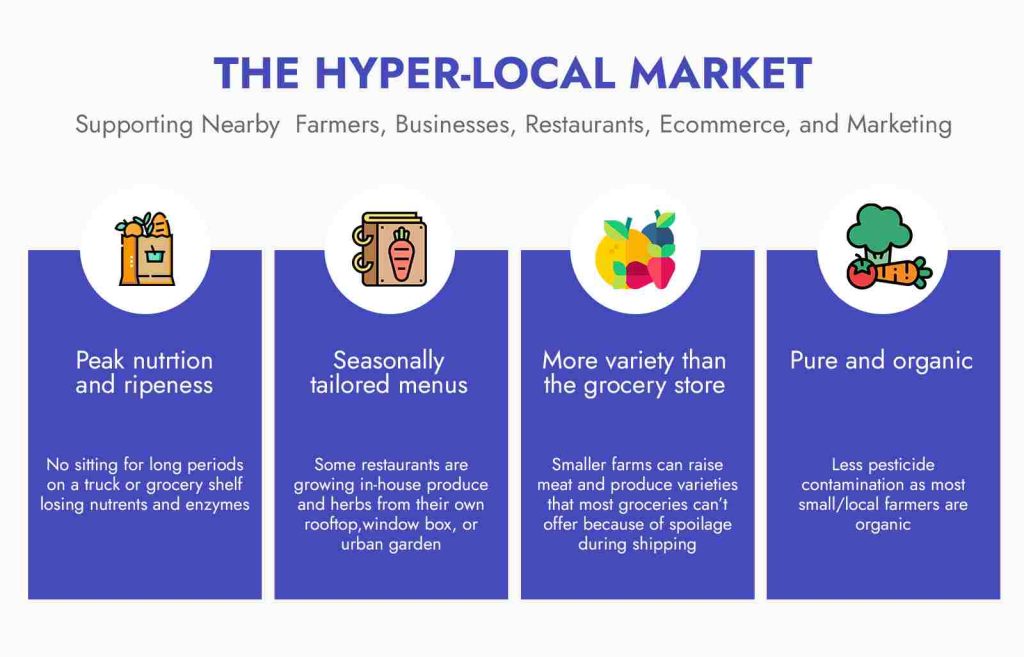
Out of the many direct and indirect advantages which we have seen previously, the following stands above all:
Helps build a futuristic and sustainable ecosystem
The most significant benefit of a hyperlocal business model marketplace is that it is an initiative towards sustainable localities. Consuming and producing in the same area is, according to WHO the most healthy way for society. It is also environment friendly as carbon footprints as long transportations are reduced.
Creates a transparent system
The operations are all visible to all and hence builds trust and transparency among the stakeholders.
Single device management
A single mobile app can help you track, control and manage the entire hyperlocal marketplace. The review and feedback mechanism helps businesses address the immediate needs of the clients and continue to offer optimal services to them.
Supports local businesses
It helps local businesses move more products and help them from getting sidelined. The local demand spur will naturally drive buying and selling cycles to push the small businesses in the locality towards growth.
What is the future of hyperlocal marketplace?
The hyperlocal marketplace is the future. It is because the new trend in the e-commerce sector is to shift for a better experience offline. The online game of ranking, engaging and other marketing gimmicks have now become overrated.
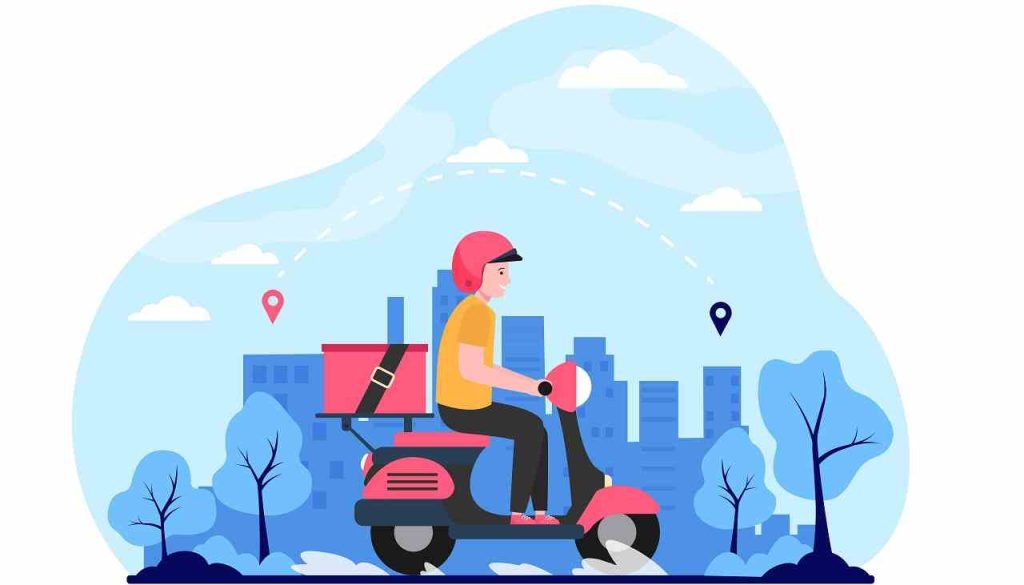
Businesses today realize that customers value real experiences. And the one where they need to improve is on the last mile delivery. It is time to answer questions like :
- How do customers get their product?
- Was the delivery in time or too late?
- What do customers think of the shipment?
- How easy and non-humiliating is the return process?
- How good was the communication between the delivering agent and customer?
- How easy was it to locate the customer door?
And many such essential questions need an answer now. Developing e-commerce applications and starting your trade is now the new normal in the present world. Struggling for deliveries, acquiring products, the long wait, etc. are the status quo in this new normal. But it is when you break this status quo in new normal that you outshine others and win the customer’s hearts.
Hyperlocal deliveries are the closest solution to this problem. You can harness them to create a strong backlink between distribution and supply-chain. The hyperlocal delivery models need a new avatar in a new place. So the working process we described above is crucial in developing the right understanding of your specific local scenario.
Hyperlocal businesses have a huge market possibility in the near future, especially in the post-COVID 19 scenario. The grocery shopping apps were the best alternatives for businesses and customers during this pandemic.
Mindster being a world-class mobile app development company can help you set up the essential technological infrastructure for hyperlocal delivery service. You can work with our team to chart the course of your hyperlocal business, the income model you want to follow and how you want the mobile and web solutions to function and feel.
- Agentic AI1
- Android Development3
- Artificial Intelligence31
- Classified App3
- Custom App Development5
- Digital Transformation12
- Doctor Appointment Booking App14
- Dropshipping1
- Ecommerce Apps40
- Education Apps2
- Fintech-Apps37
- Fitness App4
- Flutter4
- Flutter Apps20
- Food Delivery App5
- Grocery App Development1
- Grocery Apps3
- Health Care10
- IoT2
- Loyalty Programs9
- Matrimony Apps1
- Microsoft1
- Mobile App Maintenance2
- Mobile Apps127
- Product Engineering6
- Progressive Web Apps1
- React Native Apps2
- Saas Application2
- Shopify9
- Software Development3
- Taxi Booking Apps7
- Truck Booking App5
- UI UX Design8
- Uncategorized6
- Web App Development1








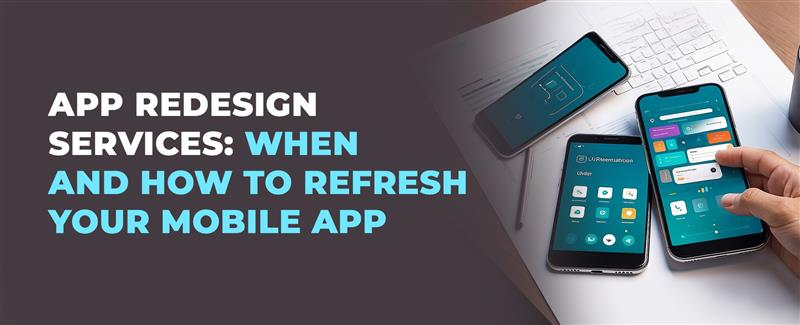
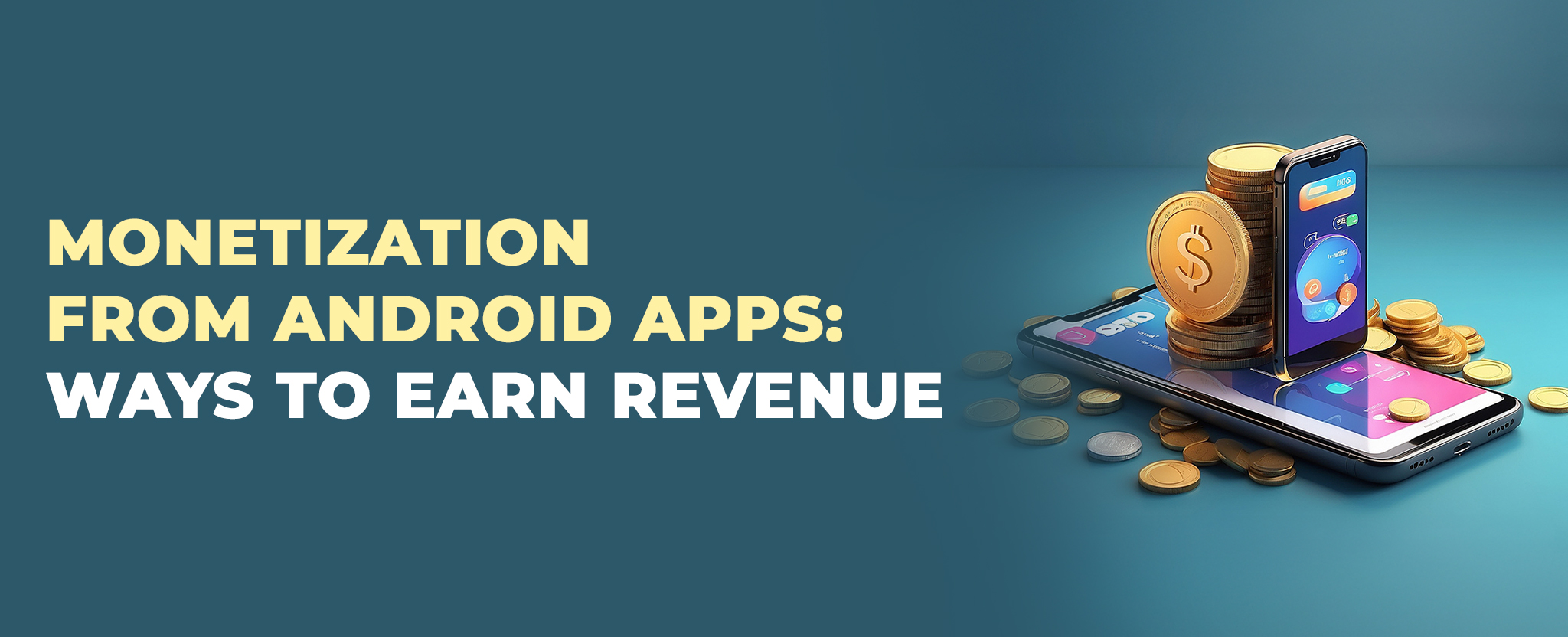
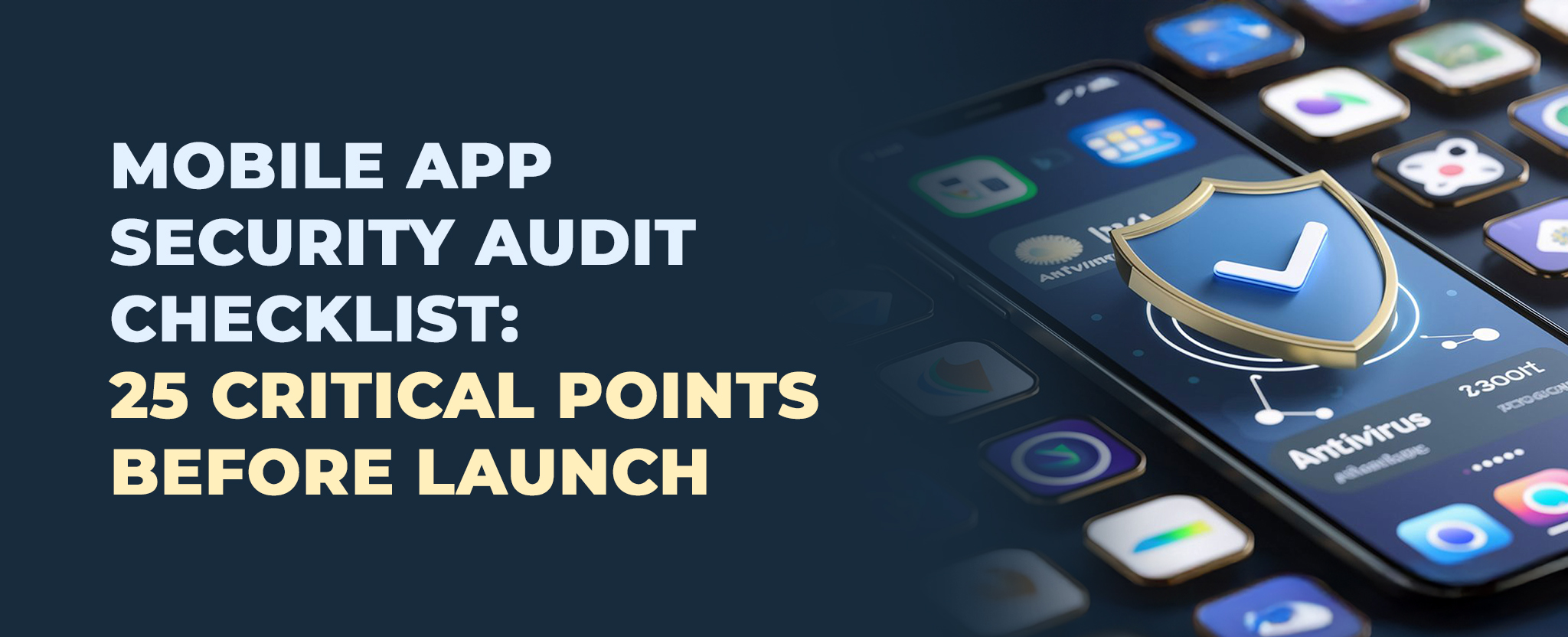
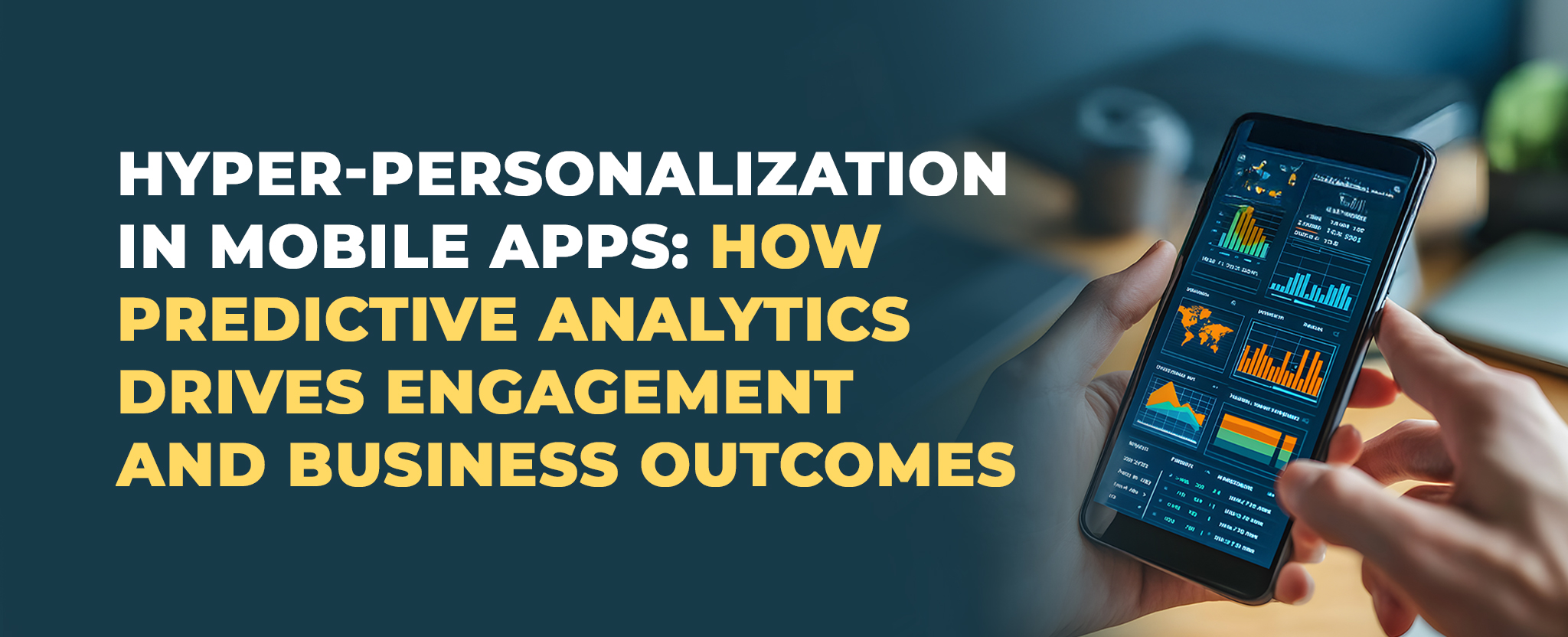






Comments